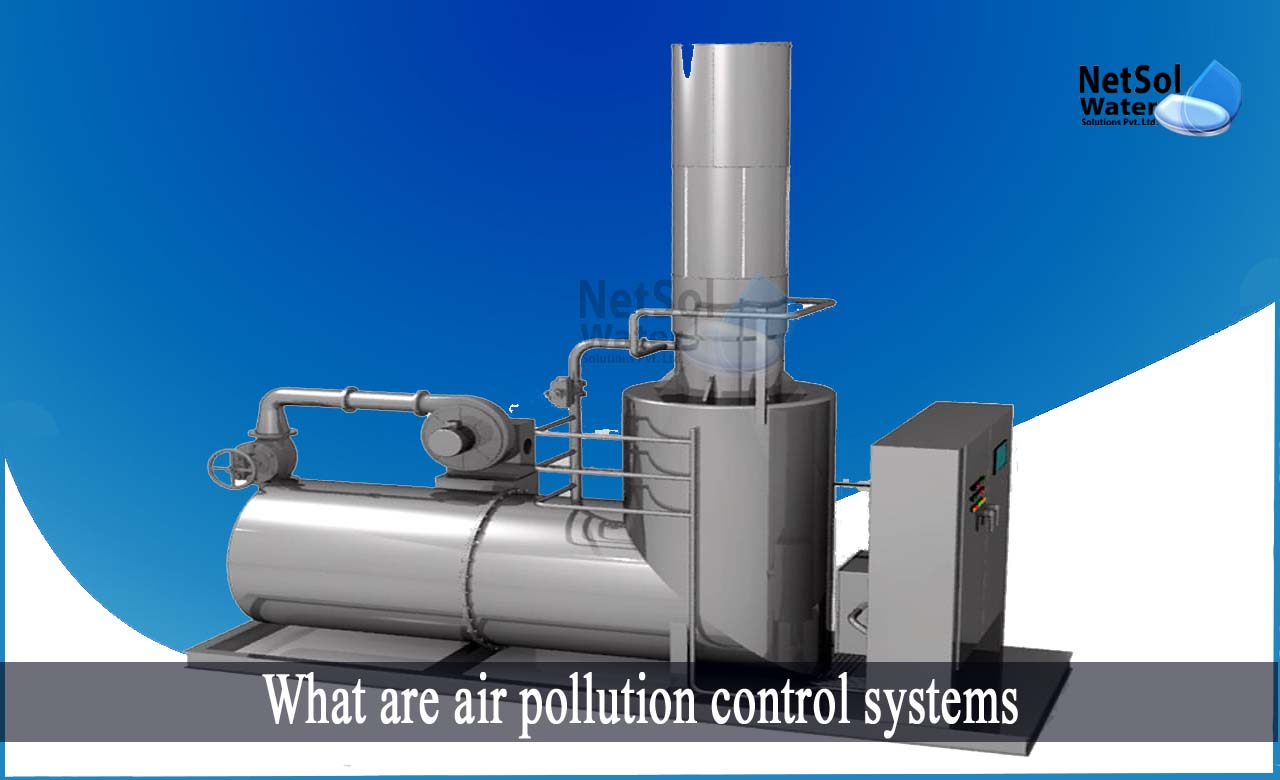Today's industrial environment demands an efficient air pollution management system, due to increasingly stringent compliance requirements, stricter enforcement, and growing public pressure. You have a duty as a responsible business to maintain compliance with current laws at your location, and to continually look for ways to lessen your impact on the environment.
Netsol Water is aware that there are several choices available to you for achieving your compliance, and reducing air pollution demands. You may filter through these choices with the aid of our systems to identify the best alternative for your industry.
In this article, we will discuss some of the air pollution control systems.
What are Air Pollution Control Systems?
Due to strict environmental requirements, an efficient air pollution control system is required for the atmospheric emissions, from industrial combustion sources and waste gas from chemical processes.
Particulate matter (PM), nitrogen oxides (NOx), sulphur oxides (SOx), carbon monoxide (CO), volatile organic compounds (VOCs), and other substances like HAPs (Hazardous Air Pollutants), which include hydrogen chloride and hydrogen fluorides, are just a few of the pollutants that can be released from industrial combustion sources and waste gas, from chemical processes.
Air pollution control methods and technologies must be chosen based on the pollutant, being released in order to reduce pollution output.
· Thermal Oxidizer
VOCs and many other pollutants are treated at high temperatures in thermal oxidizers, also known as fume incinerators, in order to efficiently eliminate them. Direct-fired, recuperative, and regenerative thermal oxidizers are examples of common thermal oxidizer types.
Depending on the circumstances surrounding the application and process, each technology offers advantages and disadvantages.
Which oxidizer can be the best for you?
The use of thermal oxidation as a standard way to minimize VOC emissions is generally recognized in a variety of sectors, making thermal oxidizer systems particularly common air pollution management solutions.
Since, each oxidizer technology is only suitable for extremely specific applications and process circumstances; it is highly common to misapply these systems. The suitable thermal oxidizer design must be chosen for the right issue; else, the current air control problem won't be resolved and new difficulties will arise. Our knowledge is useful in this situation. Netsol collaborates with you at every stage to choose the ideal oxidizer for your requirements.
· CatOx (Catalytic Oxidizer)
An air pollution control system known as a catalytic oxidizer, also known as a recuperative catalytic oxidizer, uses catalyst to treat process exhaust. Oxidation is achieved at considerably lower temperatures than simple thermal oxidation, by utilizing catalyst in the apparatus.
These systems are best suited for process applications with lower volatile organic compound concentrations (VOCs). For virtually endless lengths of time, catalytic oxidizers can sustain continuous steady-state working conditions.
A correctly constructed catalytic oxidizer readily achieves a greater than 99% destruction rate efficiency of VOCs, with few moving components and steady, stable operating pressures and temperatures.
· System for desulfurization (SOx Removal)
In order to comply with strict environmental regulations, desulfurization systems are a method for removing sulphur dioxide (SO2) from exhaust gas, from the burning of fossil fuels and emission of chemical process.
The main technologies to remove SO2 are as follows:
1) Dry and Semi-dry Sorbent Injection.
2) Wet Scrubbing.
· DENOx System
In order to comply with strict environmental regulations, the DeNOx system is a technique for removing nitrogen dioxide (NO2) from exhaust gas from the burning of fossil fuels, and emission of chemical process.
The following technologies are the main ones used to remove NO2:
1)Initial Catalytic Reduction (SCR).
2) Selected Catalytic Reduction (SNCR).
3)(SNCR+SCR) Hybrid.
· Electrostatic Precipitator
Using the generated electrostatic charge, an electrostatic precipitator collects the fine dust and particulate matter from combustion exhaust gas and emission gas, in chemical processes.
How can we assist?
There is no such thing as a one-size-fits-all air pollution management solution. To help you reach or surpass your emission control goals, we can evaluate your process conditions and compliance needs.
We make recommendations based on these evaluations that will reduce your overall operating expenses, while boosting productivity and efficiency. Every system of pollution control comes with a unique set of automated controls, which are designed to maximize the system's productivity, safety, and effectiveness.
To discuss your particular problem and to start creating the solution that is appropriate for you, get in touch with our skilled experts.You need a partner that has a thorough awareness of the most recent, environmental concerns and technological advancements, as well as someone with considerable industry experience and technical expertise, in emission control methods.
Contact our environmental cleaning experts at +91 9650608473 or get in touch via email at enquiry@netsolwater.com



